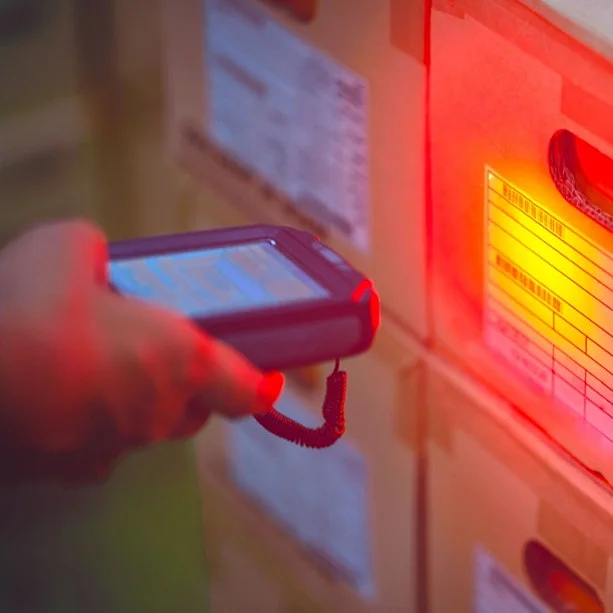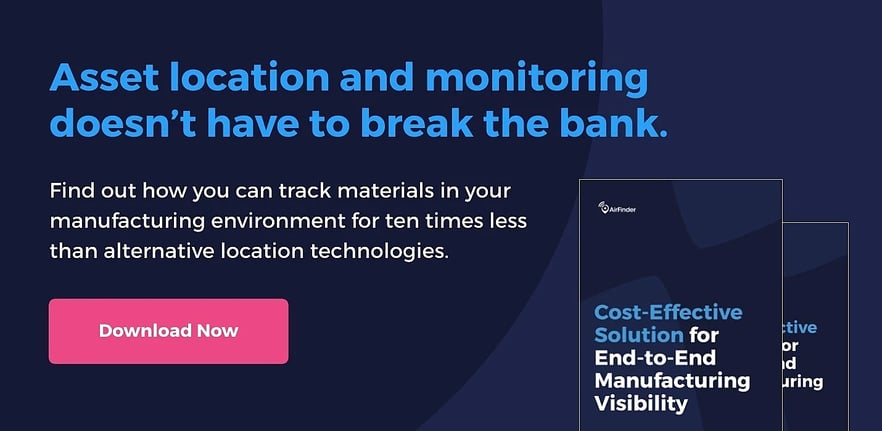Most companies use passive RFID tags for their asset tracking because it’s inexpensive and we take their disadvantages, such as limited read-range limited, for granted. The mantra has been that battery-powered asset tags are cost-prohibitive without clear business benefits.
For many businesses, however, nothing could be further from the truth.
Battery-powered asset tags using active RFID and other Bluetooth technologies may instead provide clear cost and data benefits that allow your operations to run smoother, leaner, and more efficiently. Below, we’ll present four cases where companies should consider the significant benefits of these platforms.
When precise location information matters
Passive RFID tags provide reliable information if you’re right near the reader or move directly within an RFID gate. If you’re not moving in these lanes, the system quickly becomes much less accurate. To compensate for this, many companies have people on each shift to search workstations, bins, and other locations for items that have been misplaced.
Battery-powered asset tags of a real-time location system (RTLS) actively transmit their location information continuously, allowing you to understand where they are at any moment. There’s no need to take a specific route or be in a specific location to generate this information.
AirFinder’s active RFID system can cover up to 10,000 square feet with a single reader and a few reference points.
It can be significantly important if you’re working with materials that require a forklift or if you have a limited number of generators or construction compressors for a job site. Construction companies and other more mobile businesses can use a battery-powered asset tag platform at multiple sites thanks to GPS and other support to acquire precision location data even as you move between locations.
When you need data tracking too
Passive RFID tags don’t provide any data; they simply send out a basic signal when read. Passive RFID tag technology can only say, “I am here.”
If your business needs more information, then the tags you use will need to be more robust. Battery-powered asset tags make this possible because the battery can also support low-power modules for things like temperature, light, or humidity. The different data applications are growing each quarter.
Japan's Nagoya University Hospital uses Bluetooth low energy (BLE) tags on wristbands to collect and transmit patient vital signs. Additional tags capture the movements of nurses, doctors, and other staff. By bringing this information together, the hospital is better able to track workload in general, workload relative to individual patients, and look for patterns in patient health signs that require intervention.
Your business likely has similar interactions and patterns that this level of asset tracking could monitor.
A secondary benefit for the hospital using BLE is that it produces much less RF radiation than RFID readers while supporting sensors in every room without needing expensive readers in every room.
When a major infrastructure update is planned
The major advantage of passive RFID is that the tags are very inexpensive. Most business can easily afford to attach them to products, components, ID tags, and other assets to start some on-site tracking. The disadvantage is that their gates can be very expensive to purchase and install.
Cost becomes a major downside if you’re opening up a new facility or introducing asset tracking to a new part of our warehouse or plant. RFID gates can quickly eat up a major portion of your budget and limit your ability to cover every corner of your space.
Battery-powered asset tags, for many companies, are less expensive to adopt on a building-wide level because the costs of readers are so significantly less. These sensors are also more accurate over longer distances, allowing you to have less infrastructure to cover your operations.
Pair this coverage cost with the other advantages above, and you’re likely to get the information you need at an affordable cost with battery-powered asset tags.
Ready to learn how battery-powered asset tags could generate savings for you? Contact us for a discussion unique to your operations and needs.





